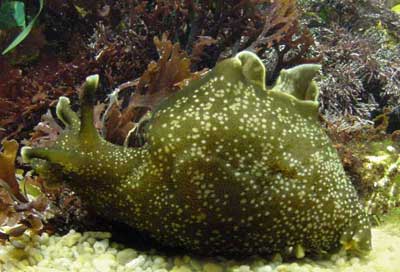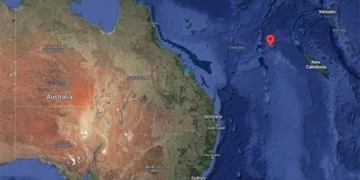The sea hare is not actually a hare; it is a marine animal with two pairs of tentacles on its head. The front pair functions as tactile appendages, while the back pair serves as olfactory organs. When moving, these tentacles extend forward and sideways, and when at rest, they stand upright, resembling a pair of rabbit ears, hence the name sea hare.
 |
(Photo: brembs) |
Sea hares are mollusks that belong to the class of shelled animals living in shallow waters. However, their shells have degenerated into a cuticle membrane, which is spiral-free and translucent, buried beneath the outer layer on their back, making it invisible from the outside.
Sea hares feed on various types of algae, and their color changes based on their diet: when they eat red algae, their bodies turn rosy; when they consume brown algae, they darken, and some even develop a velvety appearance with branches resembling algae protruding from their bodies. This allows them to blend into their environment. This is a unique method of evasion from predators.
While sea hares can passively avoid predators, they also possess active defense mechanisms. Within the body of a sea hare, there are two glandular secretions: a purple gland located at the edge of the outer membrane, which, when confronted by a threat, releases a purple fluid that clouds the seawater, enabling them to escape the predator’s sight. The other gland, located in front of the outer membrane, secretes a milky white acidic fluid with a foul odor, serving as its chemical weapon.
Spring is the breeding season for sea hares. Sea hares are hermaphroditic and engage in heteronormative mating. Their mating process is quite unique: they often mate in groups, forming chains of five to several dozen individuals. In this chain, the first individual acts as a female, the next as a male, followed by another female, and this pattern continues along the chain. Eggs are released during mating or a few hours after separation. They produce a large number of eggs, but not many are fertilized, all of which are wrapped in a gelatinous thread. The Cantonese refer to this sea hare egg sac as “sea flour thread”, which is a high-quality culinary ingredient and also serves as an anti-inflammatory remedy.

(Photo: glaucus)

















































